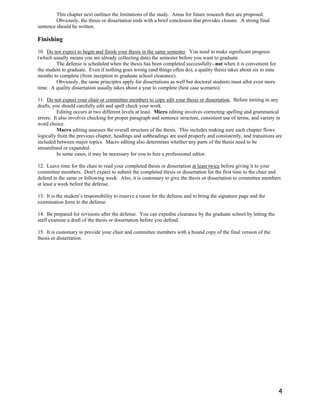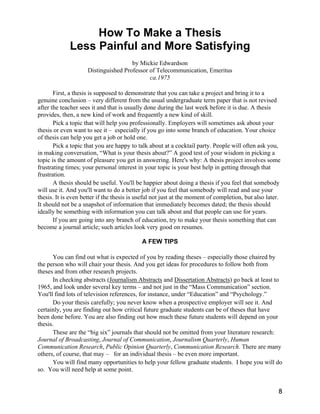This document provides guidelines for writing a thesis or dissertation. It discusses getting started with choosing a topic and question, conducting a literature review to develop a purpose, and writing a proposal. It outlines the typical chapters for a thesis, including the introduction/purpose, literature review, methodology, findings, and discussion. It provides tips for completing the writing process, including segmenting the work into small chunks, scheduling writing days and reward days, and hiring an editor. The document emphasizes picking an interesting topic, finding a dedicated writing space, and treating yourself to keep motivated throughout the lengthy process of completing a thesis or dissertation.







